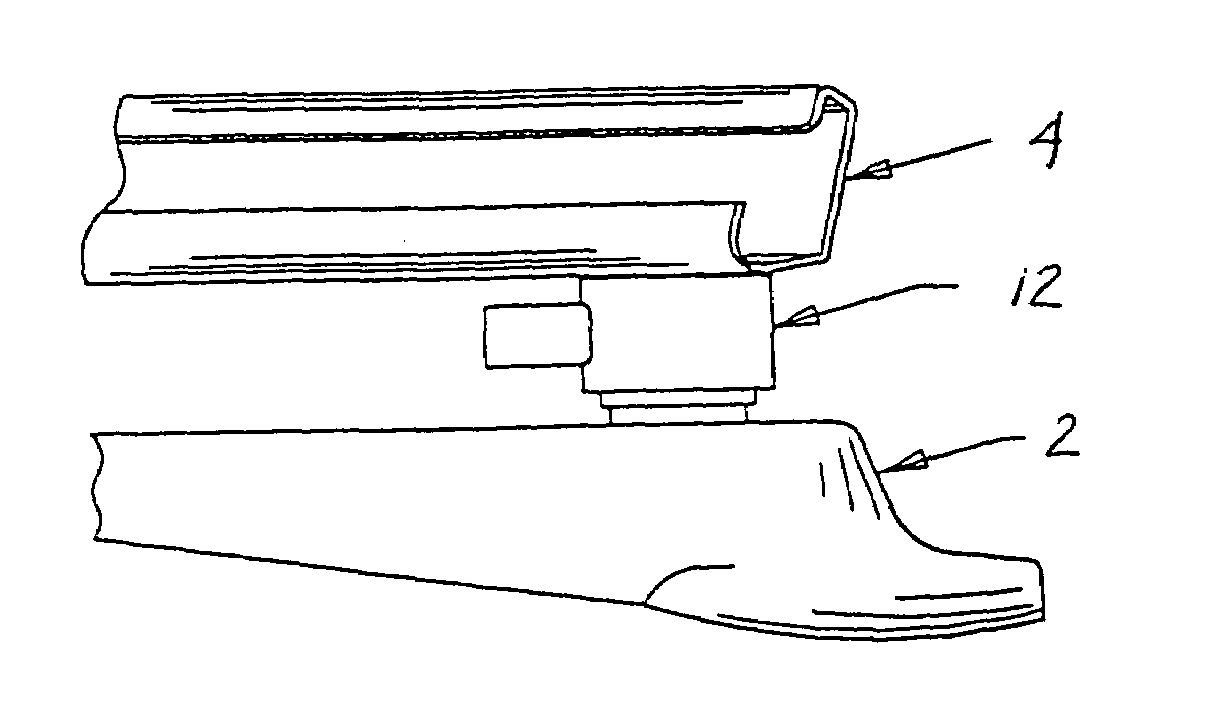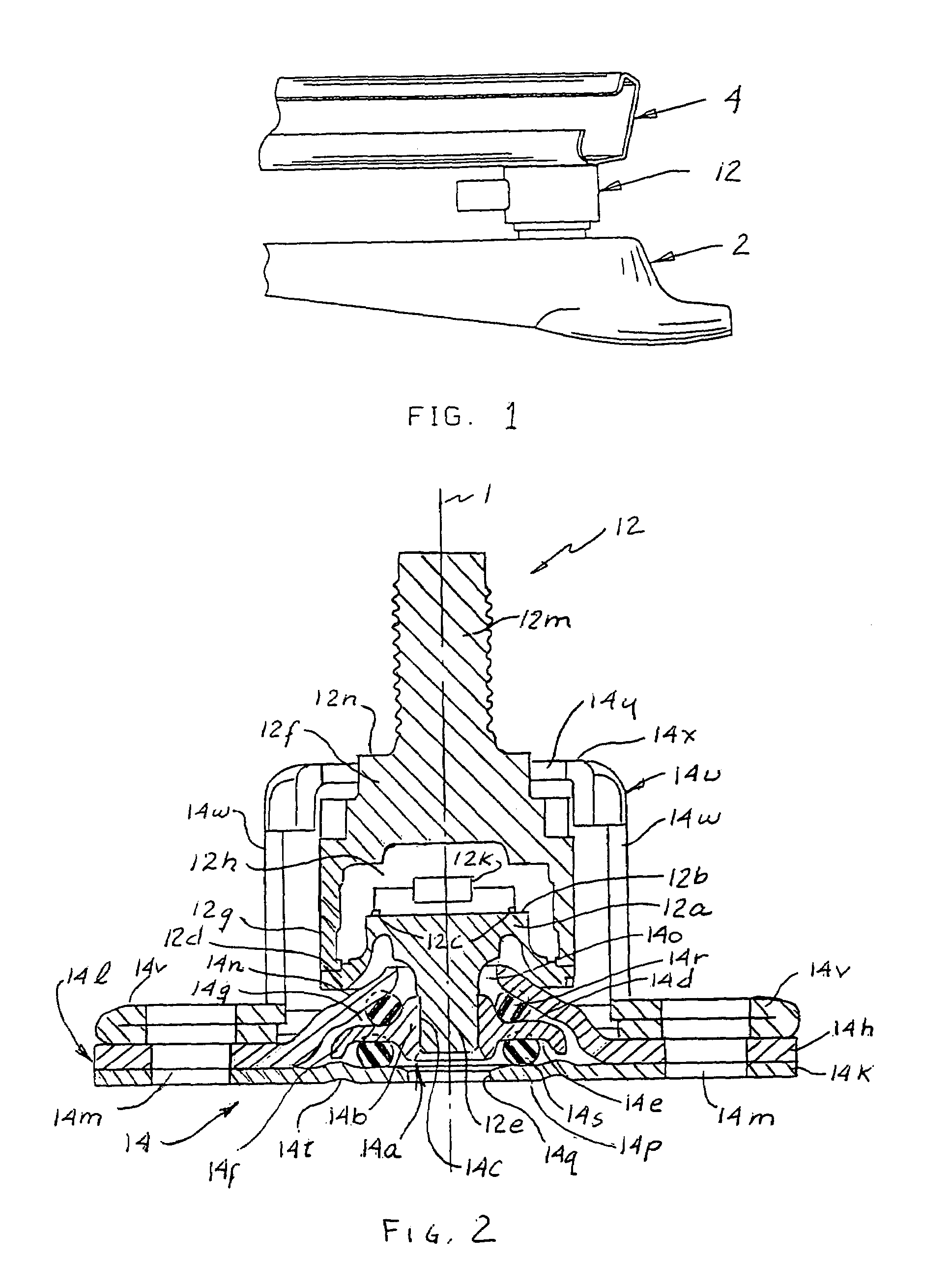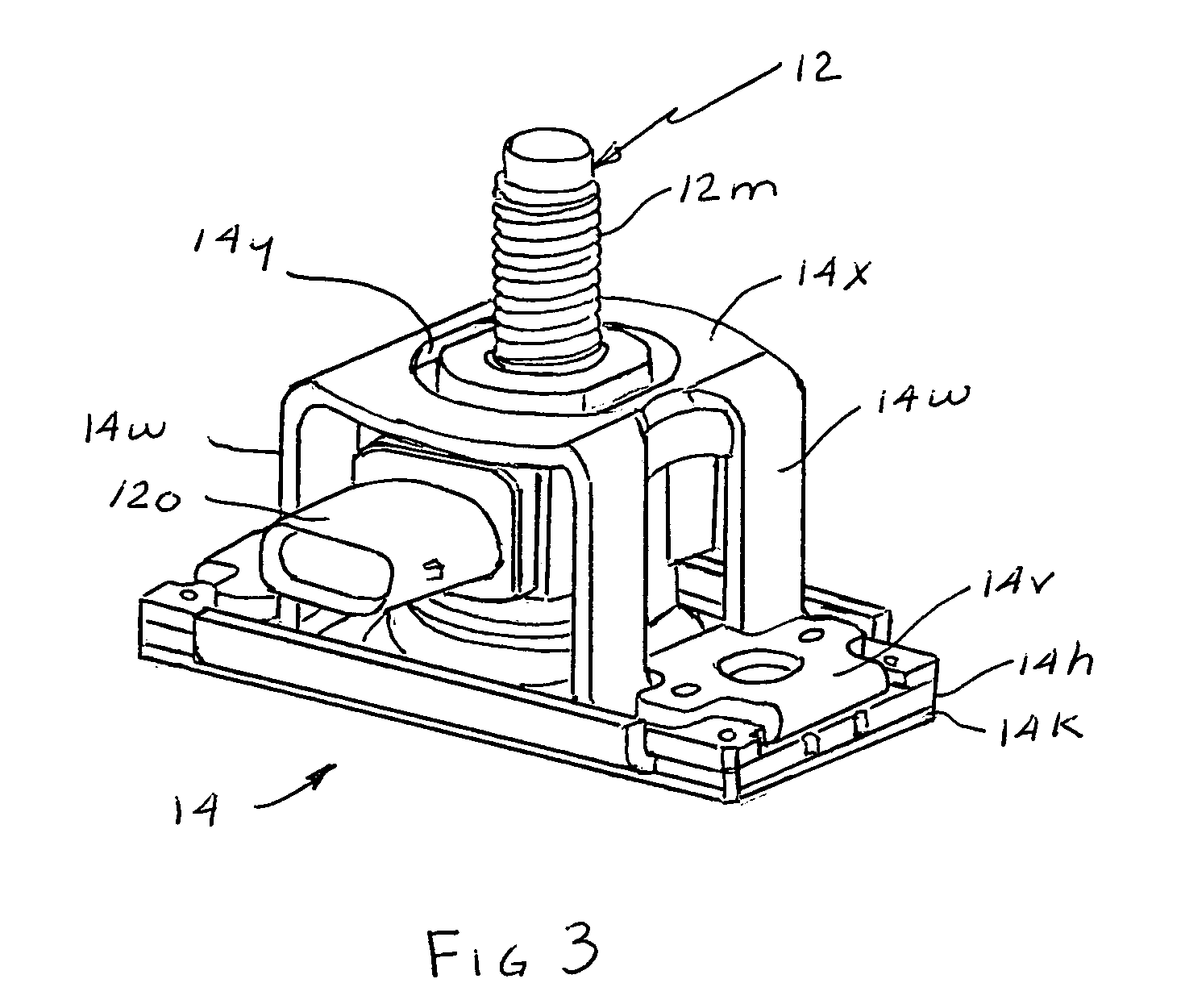Sensor mounting apparatus for minimizing parasitic stress
a sensor and apparatus technology, applied in the direction of pedestrian/occupant safety arrangement, instruments, tractors, etc., can solve the problems of parasitic stress affecting the sensor output, airbag deployment can be a problem for small children or children, etc., to achieve sufficient robustness, maintain crash worthiness, and minimize parasitic stress
- Summary
- Abstract
- Description
- Claims
- Application Information
AI Technical Summary
Benefits of technology
Problems solved by technology
Method used
Image
Examples
Embodiment Construction
[0016]FIG. 1 shows one possible placement of an occupant weight sensor for use in a vehicle. Occupant weight sensor 12 is shown mounted between a first, broken away frame 2 for fixed attachment to the chassis of a vehicle and a second, seat support frame 4. It will be understood that the sensor could also be mounted at other locations, such as above seat track frames, i.e., between an upper track and a pan frame.
[0017]Sensor 12, shown in FIG. 1, is of the type shown in FIG. 1a of copending, coassigned application Ser. No. 10 / 874,963 referenced above. With reference to FIGS. 2 and 3, sensor 12 comprises a first body 12a of suitable material such as stainless steel having a sense surface 12b on which suitable sensors 12c are disposed. First body 12a is formed with an annular, radially extending flange surface 12d around the periphery of the sense surface and a post 12e extending away from body 12a along a longitudinal axis 1.
[0018]A second body 12f of suitable material such as stainle...
PUM
 Login to View More
Login to View More Abstract
Description
Claims
Application Information
 Login to View More
Login to View More - R&D
- Intellectual Property
- Life Sciences
- Materials
- Tech Scout
- Unparalleled Data Quality
- Higher Quality Content
- 60% Fewer Hallucinations
Browse by: Latest US Patents, China's latest patents, Technical Efficacy Thesaurus, Application Domain, Technology Topic, Popular Technical Reports.
© 2025 PatSnap. All rights reserved.Legal|Privacy policy|Modern Slavery Act Transparency Statement|Sitemap|About US| Contact US: help@patsnap.com



